
On this day, German General Erwin Rommel and his Afrika Korps launch an offensive against an Allied defensive line in Tunisia, North Africa. The Kasserine Pass was the site of the United States' first major battle defeat of the war.

General Erwin Rommel was dispatched to North Africa in February 1942, along with the new Afrika Korps, to prevent his Italian Axis partner from losing its territorial gains in the region to the British. Despite his skill, until this point Rommel had been unable to do much more than manage his own forces' retreats, but the Battle of Kasserine Pass would finally display the "Desert Fox's" strategic genius.


In the Battle of El Alamein in August 1942, British General Bernard Montgomery pushed Rommel out of Egypt and into Tunisia, behind the Mareth Line, a defensive fortification built by Vichy French forces. After taking several months to regroup, Rommel decided on a bold move. Rommel set his sites of Tunis, Tunisia's capital and a key strategic goal for both Allied and Axis forces. Rommel determined that the weakest point in the Allied defensive line was at the Kasserine Pass, a 2-mile-wide gap in Tunisia's Dorsal Mountains, which was defended by American troops. His first strike was repulsed, but with tank reinforcements, Rommel broke through on February 20, inflicting devastating casualties on the U.S. forces. The Americans withdrew from their position, leaving behind most of their equipment. More than 1,000 American soldiers were killed by Rommel's offensive, and hundreds were taken prisoner. The United States had finally tasted defeat in battle.

Battle of Kasserine Pass in detail
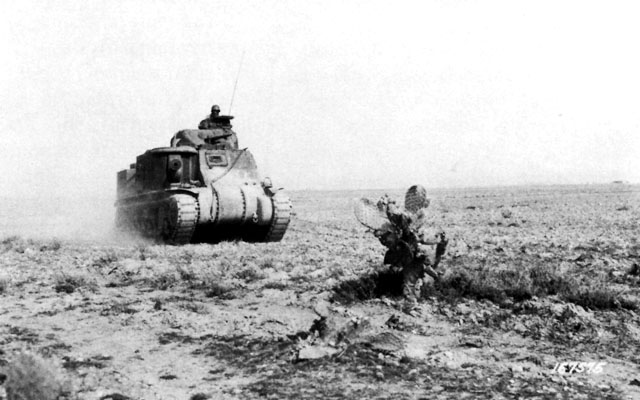
The Battle of Kasserine Pass was a battle that took place during the Tunisia Campaign of World War II in February 1943. It was a series of battles fought around Kasserine Pass, a 2 mi (3.2 km) wide gap in the Grand Dorsal chain of the Atlas Mountains in west central Tunisia. The Axis forces involved, led by Field Marshal Erwin Rommel, were primarily from the Afrika Korps Assault Group, elements of the Italian Centauro Armoured Division and two Panzer divisions detached from the 5th Panzer Army. The Allied forces involved came from the U.S Army's II Corps commanded by Major General Lloyd Fredendall, and the British 6th Armoured Division commanded by Major-General Charles Keightley, which were part of the British 1st Army commanded by Lieutenant-General Kenneth Anderson.



Significant as the first large-scale meeting of American and German forces in World War II, the relatively untested and poorly led American troops suffered heavy casualties and were pushed back over 50 mi (80 km) from their positions west of Faid Pass in the initial days of the battle. Despite early defeats, elements of the US II Corps, reinforced by British reserves, rallied and held the exits through mountain passes in western Tunisia, defeating the Axis offensive plans. In the aftermath, the U.S. Army instituted sweeping changes from unit-level organization to the replacing of commanders. When the same combatants next met, in some cases only weeks later, the U.S. forces were considerably more effective.
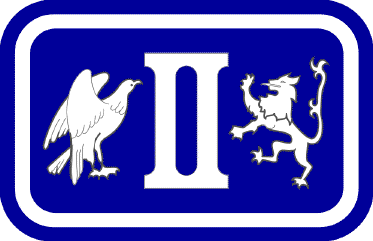
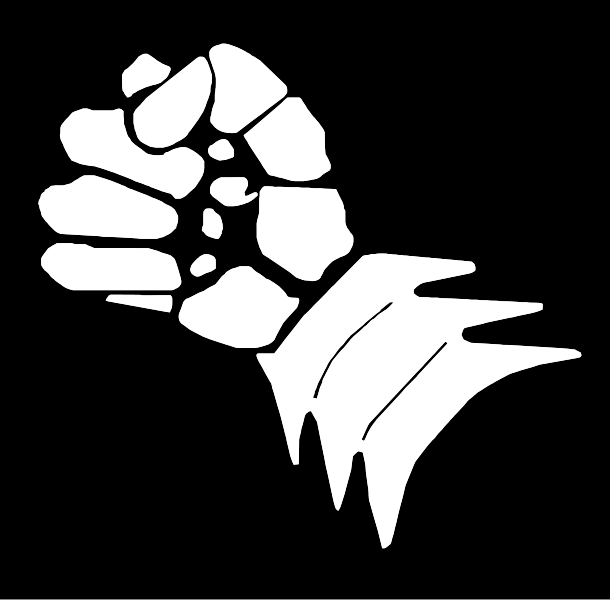
Background
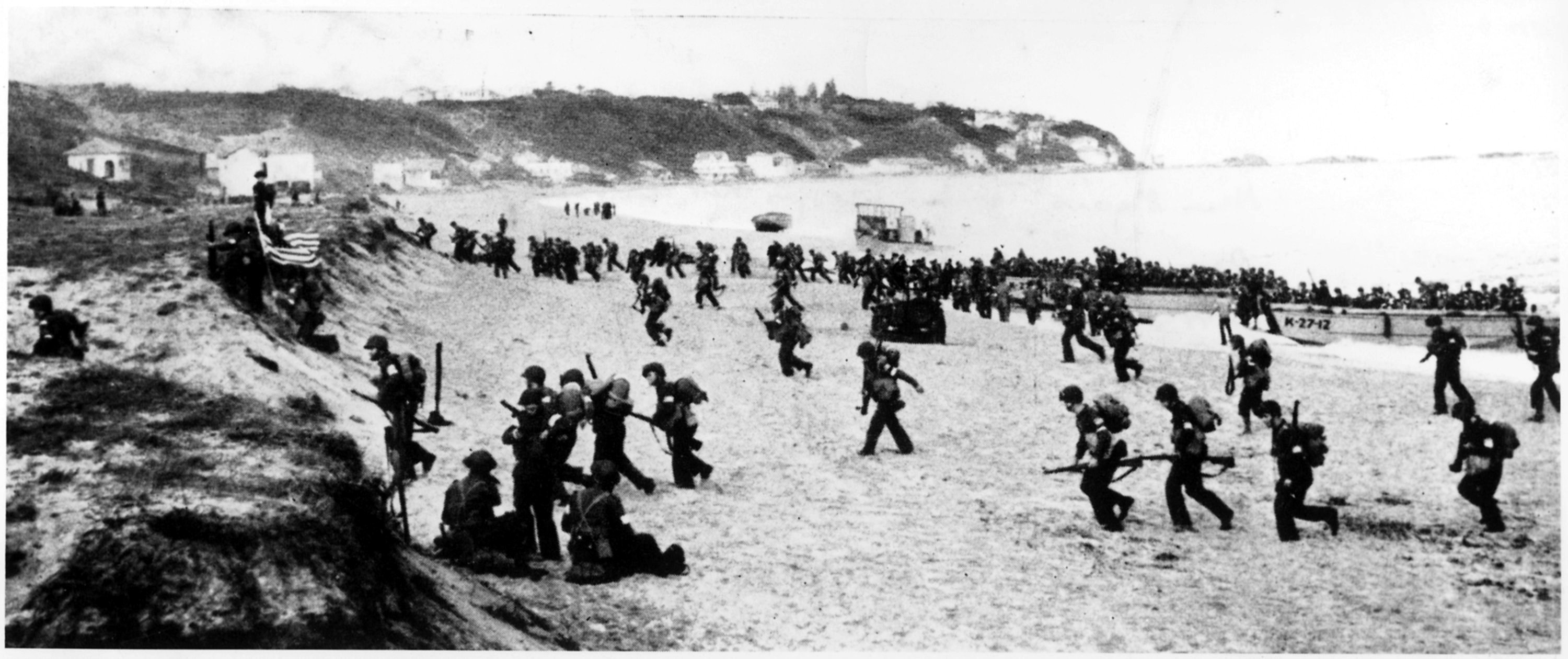
American and British forces landed at several points along the coast of French Morocco and Algeria on November 8, 1942, during Operation Torch. This came only days after General Bernard Montgomery's breakout in the east following the Second Battle of El Alamein. In response, German and Italian troops were ferried in from Sicily to occupy Tunisia, one of the few easily defended areas of North Africa, and only one night's sail from bases in Sicily. This short passage made it very difficult for Allied naval vessels to intercept Axis transports, while air interdiction proved equally difficult as the nearest Allied airbase to Tunisia, at Malta, was over 200 mi (320 km) distant. As the Allied build-up after Torch continued, more aircraft became available and new airfields in eastern Algeria and Tunisia became operational, resulting in greater success in stopping the flow of men and equipment into Tunis and Bizerta. But by this time, sizeable forces had already come ashore.

An attempt was made to cut off Tunis in November and December 1942 before the German troops could arrive in strength. However, because of the poor road and rail communications, only a small (divisional size) force could be logistically supported and the excellent defensive terrain allowed the small numbers of German and Italian troops landed there to hold them off.

On January 23, 1943, Montgomery's Eighth Army took Tripoli, thereby cutting off Rommel's main supply base. Rommel had planned for this eventuality, switching his line of supply to Tunis and intending to block the southern approach to Tunisia from Tripoli by occupying an extensive set of defensive works known as the Mareth Line, which the French had constructed in order to fend off an Italian attack from Libya.


With their lines steadied by the Atlas Mountains on the west and Gulf of Sidra on the east. Rommel expected even relatively small numbers of German/Italian troops would be able to hold off Montgomery's forces.
Upsetting this plan was the fact that Allied troops had already crossed the Atlas Mountains and had set up a forward base of operations at Faïd, in the foothills on the eastern arm of the mountains. This put them in an excellent position to thrust east to the coast and cut off Rommel's forces in southern Tunisia from the forces further north, and cut his line of supply to Tunis.[4]

Faïd Pass

Elements of Hans-Jürgen von Arnim's 5th Panzer Army reached the Allied positions on the eastern foot of the Atlas Mountains on January 30. The 21st Panzer Division met French troops at Faïd and despite excellent use of the French 75 mm (2.95 in) guns, which occasionally caused heavy casualties among the German infantry,[nb 1] the defenders were easily forced back. U.S. artillery and tanks of the U.S. 1st Armored Division then entered the battle, destroying some enemy tanks and forcing the remainder into what appeared to be a headlong retreat.[6]

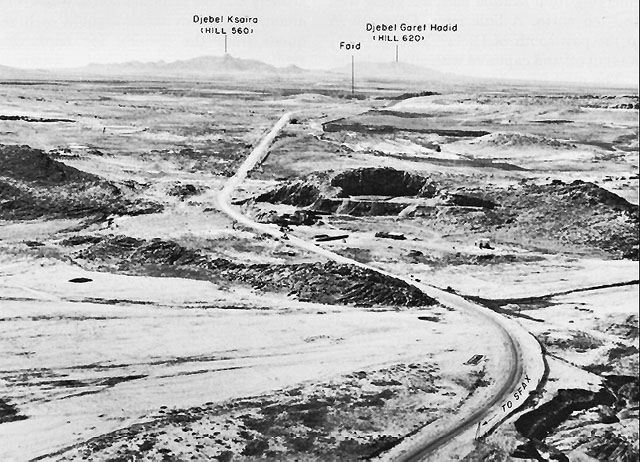
In reality, US armored forces had fallen victim to an old German tactic, previously employed with much success against British forces. The German tank retirement was a ploy, and when the panzers reached their old positions, with U.S. armor in hot pursuit, a screen of German anti-tank guns opened up, destroying nearly all the American tanks. A U.S. forward artillery observer whose radio and landlines had been destroyed by shellfire recalled, "It was murder. They rolled right into the muzzles of the concealed eighty-eights and all I could do was stand by and watch tank after tank blown to bits or burst into flames or just stop, wrecked. Those in the rear tried to turn back but the eighty-eights seemed to be everywhere."[6] Now unopposed by armor, the 21st resumed its advance towards Faïd.[6] During the German advance, American infantry casualties were exacerbated by the American habit of digging shallow slit trenches instead of foxholes, as German tank drivers could easily crush a man inside a trench by simply driving into it and simultaneously making a half-turn.[7]

Several attempts were made by the U.S. 1st Armored Division to stop their advance, but all three combat commands found themselves faced with the classic Blitzkrieg: every time they were ordered to defend a position, they would find that it had already been overrun, and they were attacked by German troops with heavy losses.[6] After three days, the U.S. II Corps was compelled to withdraw into the foothills.
Most of Tunisia fell into German hands, and the entrances into the coastal lowlands were all blocked. The Allies still held the interior of the roughly triangular Atlas range, but this seemed of little concern to Rommel since the exits eastward were all blocked. For the next two weeks, Rommel and the Axis commanders further north debated what to do next. Given his later actions, this delay may have proven costly.

Sidi Bou Zid
For the immediate outlook Rommel did not consider the 8th Army posed a serious threat. Until the destroyed port of Tripoli was reopened Montgomery could maintain only a small force in the south of Tunisia (Tripoli was not fully operational until the end of February, although ships commenced unloading there on February 9).[8] Rommel decided that there was time to improve his supply situation and further erode the Allied threat to his flank and made a proposal in early February to Comando Supremo in Rome to attack toward two U.S. supply bases just to the west of the western arm of the mountains in Algeria. Although he had little interest in holding the mountains' interior plains, a quick thrust could capture the supplies, as well as further disrupt any U.S. actions to concentrate forces in the area of Tebessa. The plan involved two battlegroups including units to be detached from von Arnim's 5th Panzer Army. Von Arnim, who had an acrimonious relationship with Rommel, strongly objected and it took a week for a compromise plan brokered by the Italian High Command to be agreed. This would commence with a thrust by 5th Panzer Army through the US communications and supply center of Sidi Bou Zid (Operation Frühlingswind) while Rommel's forces, 60 miles (97 km) to the southwest, in Operation Morgenluft would capture Gafsa and advance on Tozeur.[9]
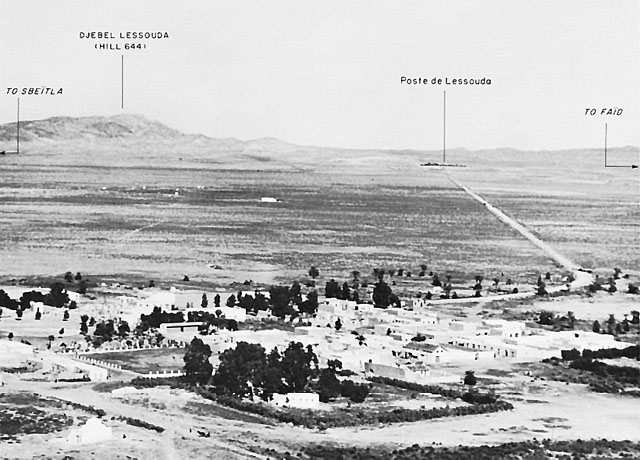
On February 14, the 10th and 21st Panzer Divisions attacked Sidi Bou Zid, about 10 mi (16 km) west of Faïd in the interior plain of the Atlas Mountains. The battle raged for a day, but the U.S. armor was outmatched and the infantry, poorly sited on three hills and unable to give mutual support, was isolated. By the end of the day, the field was won by the 5th Panzer Army. A counterattack the next day was beaten off with ease, and on February 16, the Germans started forward again towards Sbeitla.

Allied withdrawal to the Western Dorsale
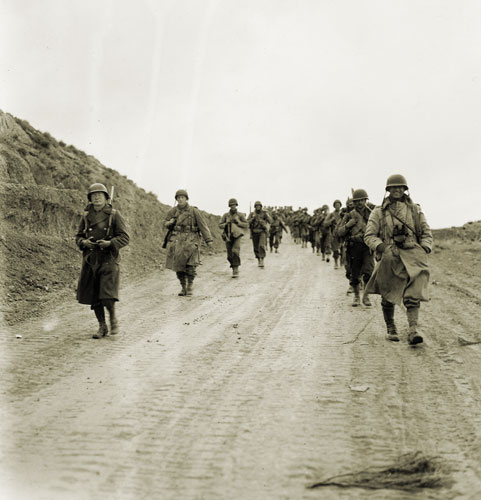
Seeing the success at Sidi Bou Zid, Rommel ordered the Afrika Korps Assault Group to attack Gafsa on February 15. However, on the night of February 14/15 the defenders evacuated Gafsa, complying with Anderson's orders that the main defence line should be on the hills around Feriana and that Gafsa should not be defended against a major attack.[10]
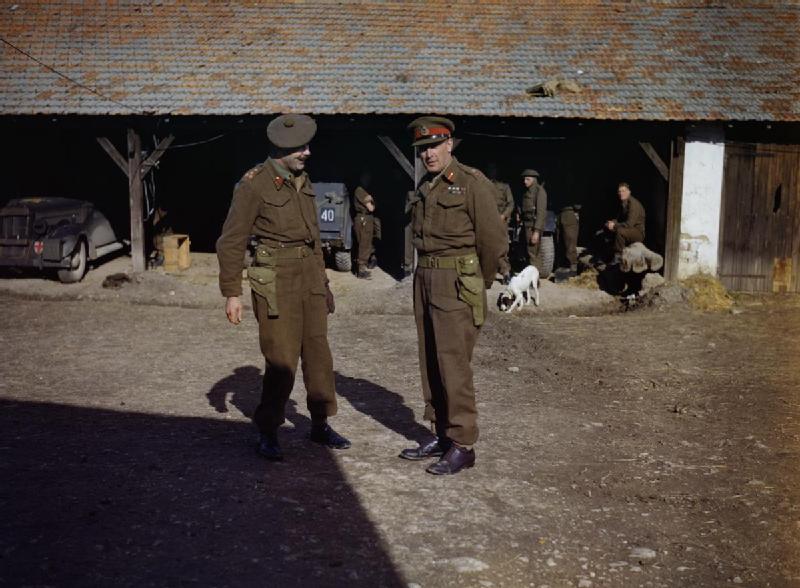
Mindful to the threat to his southern flank, Anderson obtained Eisenhower's agreement and on February 16 ordered a complete withdrawal from the Eastern Dorsale to the line of the Western Dorsale from Feriana northwards.[11] Early on February 17 Fredendall secured Anderson's agreement to a further withdrawal from Sbeitla and Feriana.[12] US II Corps were now able to focus their defensive efforts at the more easily defended Kasserine and Sbiba Passes on the western arm of the mountains. By this point, the U.S. forces had lost 2,546 men, 103 tanks, 280 vehicles, 18 field guns, three anti-tank guns, and an entire anti-aircraft battery.[13]
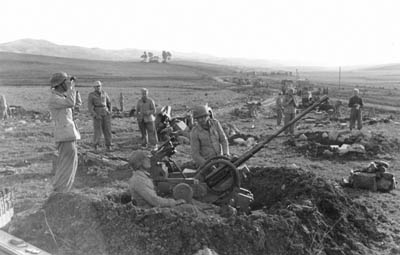
Axis plan

At this point, there was some argument in the Axis camp about what to do next; all of Tunisia was under Axis control, and there was little to do until the 8th Army arrived at Mareth. Eventually, Rommel decided his next course of action should be to attack through the Kasserine Pass into the U.S. II Corps’ main strength at Tébessa. In this way, he could gain vital supplies from U.S. dumps on the Algerian side of the western arm of the mountains, eliminate the Allies' ability to attack the coastal corridor linking Mareth and Tunis, while at the same time threatening the southern flank of 1st Army. On February 18, Rommel submitted his proposals to Albert Kesselring, who forwarded them with his blessing to the Comando Supremo (Italian High Command) in Rome.[14]

At 13:30 on February 19, Rommel received the Comando Supremo's agreement to a revised plan. He was to have 10th[nb 2] and 21st Panzer Divisions transferred from von Arnim’s 5th Panzer Army to his command and attack through the Kasserine and Sbiba passes toward Thala and Le Kef to the north, clearing the Western Dorsale and threatening the 1st Army's flank.[16] Rommel was appalled. This plan diluted the concentration of his forces and would, once through the passes, dangerously expose his flanks. A concentrated attack on Tébessa, while entailing some risk, could yield badly needed supplies, destroy Allied potential for operations into central Tunisia and possibly give the Luftwaffe a forward base in the form of the airfield at Youks-les-Bains to the west of Tébessa.[17]

Battle
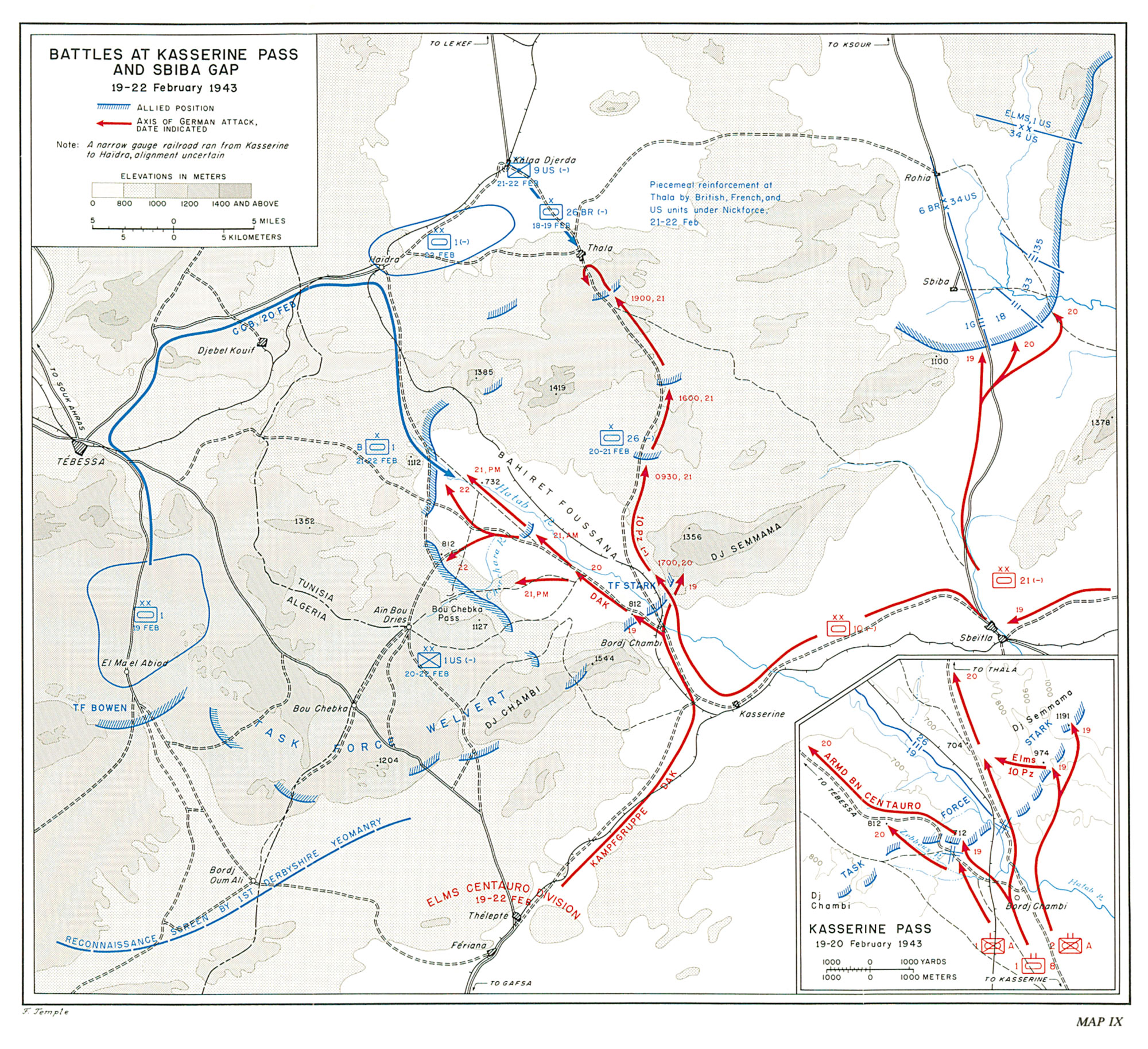
In the early hours of February 19, Rommel ordered the Afrika Korps Assault Group from Feriana to attack the Kasserine Pass. 21st Panzer Division at Sbeitla were ordered to attack northward through the pass east of Kasserine which lead to Sbiba and Ksour. The Kampfgruppe von Broich, the battlegroup released by von Arnim from 10th Panzer Division, was ordered to concentrate at Sbeitla ready to exploit success in either pass.[18]
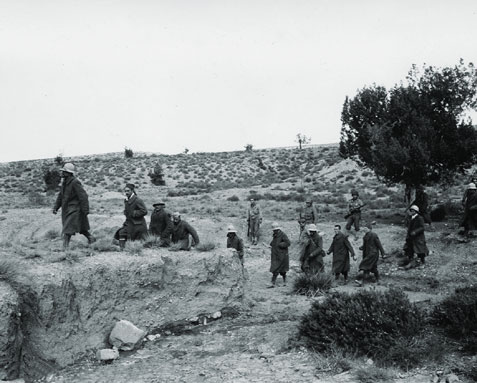
Sbiba

In the Sbiba area facing the German armored advance was the British 6th Armoured Division (less its 26th Armoured Brigade which except for the tanks of the 16/5th Lancers had been sent to Thala). Also in the line was 18th Regimental Combat Team from US 1st Infantry Division and three battalions of infantry from US 34th Infantry Division. There were also three US Field Artillery battalions, elements of two British anti-tank regiments and some French detachments,[19] 21st Panzer Division made little progress against the combined firepower of the defending force which had also laid minefields. 21st Panzer was checked and then driven back by February 20.[20]

Kasserine
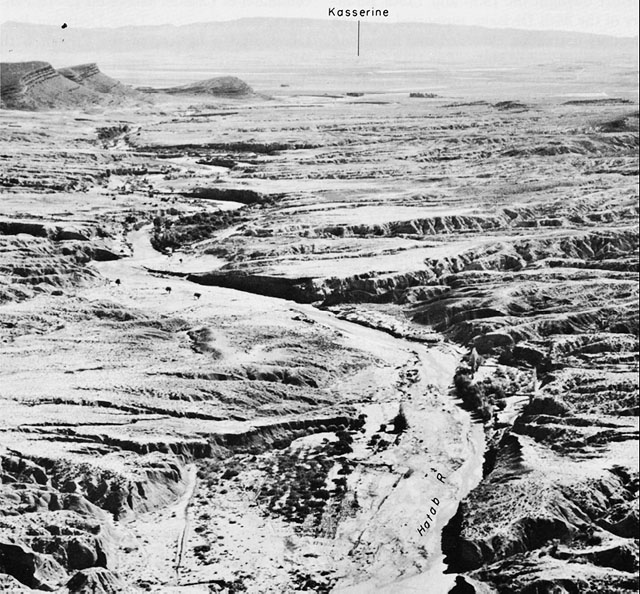
Defending the pass itself was a force comprising 1st battalion US 26th Infantry Regiment, US 19th Combat Engineers Regiment, the US 6th field artillery battalion, a tank destroyer battalion and a battery of French artillery. On the hills to their west was French General Welvert's Task Force Welvert comprising a US Ranger and infantry battalion, three French infantry battalions, two US field artillery battalions, four French artillery batteries and engineer and anti-aircraft detachments. Furthest west was Task Force Bowen (3rd battalion US 26th Regimental Combat Team), blocking the track from Feriana towards Tebessa. Between Task Force Bown and Tebessa to the north was the regrouping US 1st Armored Division although only Combat Command B were fit for combat.[12] The positions in the pass had been placed under Colonel Alexander Stark, commander of 26th RCT, on the night of February 18 and the command named Stark Force.[19]

An initial attempt to surprise the Kasserine defenses by quickly pushing the 33rd Reconnaissance Unit into the pass failed and a battalion of panzer grenadiers was ordered into the floor of the pass and another onto Djebel Semmama, the hill on its eastern flank. Only slow progress was made against defensive artillery fire and the tanks of 1/8th Panzer Regiment were committed at noontime but little further progress resulted against stubborn defense.[21]

Frustrated by the lack of progress Rommel decided to commit his units from 10th Panzer to the Kasserine Pass the next morning in a co-ordinated attack with the Afrika Korps Assault Group which was to be joined by elements of the Italian 131st Armored Division Centauro.[22] Meanwhile Allied reinforcements in the form of the British 6th Armoured Division's 26th Armoured Brigade had been arriving at Thala. The brigade's commander, Brigadier Dunphie, making forward reconnaissance, decided to intervene. However, First Army restricted him to sending a small combined-arms group comprising a company of infantry, a squadron of 11 tanks, an artillery battery and an anti-tank troop ("Gore Force").[23] A further organisational change was made when Brigadier Cameron Nicholson from British 6th Armoured Division was given command of all units northwest of the pass under the name "Nickforce".[24]

Overnight, the American positions on the two shoulders overlooking the pass were overrun and at 8.30am German panzer grenadiers and Italian Bersaglieri resumed the attack. At 10.00am Dunphie judged that Stark Force was about to give way under the pressure and ordered Gore Force to the Thala side of the pass. At 1.00pm Rommel committed two battalions from 10th Panzer and the combined pressure broke open the defenses.[23] The US survivors made a disorganised retreat up the western exit from the pass to Djebel el Hamra where 1st Armored Division's Combat Command B was arriving. Rommel had special words of praise for the Centauro's 7th Bersaglieri Regiment, who attacked fiercely and whose commanding officer, Colonel Luigi Bonfatti, was killed during the attack.[25] On the exit to Thala, Gore Force slowly leapfrogged back, losing all its tanks in the process, to rejoin 26th Armoured Brigade some 10 miles (16 km) further back.[23] As February 20 came to a close the Axis forces stood poised to strike both towards Tebessa and Thala and both sides now paused to make plans for the next day.
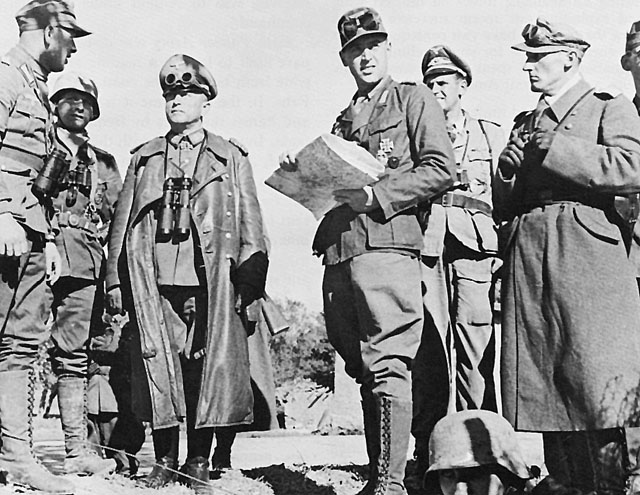
Djebel el Hamra

The Afrika Korps Assault Group began moving along the Hatab River valley towards Haidra and Tebessa in the early afternoon of February 21 and advanced until they met defenders consisting of the US 1st Infantry Division's 16th Infantry Regiment and Combat Command B of the US 1st Armored Division at Djebel el Hamra. The German-Italian force was halted and despite heavy pressure, including air attacks, failed to dislodge the American defenders.[26] Having brought the Axis drive towards Tebessa to a halt Generals Robinett and Allen now turned their attention to planning a counterattack that was take place the next day, February 22. Plans made by both sides were upset by the ongoing battle, and the Axis forces launched another assault on the US position on the morning of the 22nd. Although the American defenders were pressed hard, the line held, and by mid-afternoon, the US infantry and tanks launched a counterattack that broke the German and Italian force. More than 400 Axis prisoners were taken as the counterattack was pressed into the Afrika Korps position.[27]

Thala
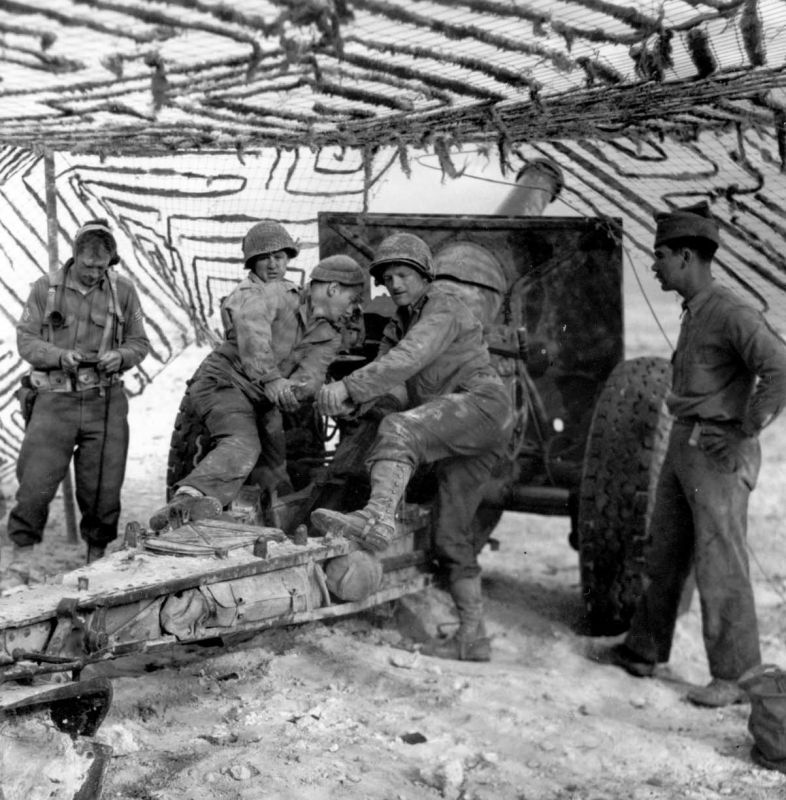
Rommel had stayed with the main group of the 10th Panzer Division on the route toward Thala, where the British 26th Armoured Brigade and remnants of the US 26th Infantry Regiment had established positions along a series of ridgelines leading to Thala. Throughout the February 21, the 10th Panzer Division continued to press north to the town of Thala. If the town fell and the German division decided to move on the southernmost of the two roads from Thala to Tebessa, the U.S. 9th Infantry Division to the north would be cut off from its supplies, and Combat Command B of the 1st Armored Division would be trapped between the 10th Panzer Division and its supporting units moving north along the second road to Tebessa. The combined force fought a holding action in front of Thala retreating ridge by ridge to the north, until by the close of the day the battered British-American force held the German attacks just south of the town itself.
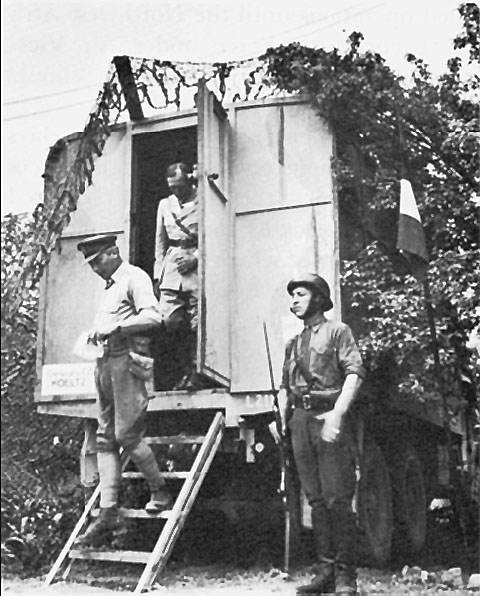
The entire divisional artillery of the U.S. 9th Infantry Division, 48 guns strong, plus a number of 37mm Anti-Tank gun platoons, that had started moving on February 17 from their positions 800 mi (1,300 km) west in Morocco, was emplaced that night. When the battle reopened the next day, the defenses were much stronger: the front line was held predominantly by British infantry with exceptionally strong backing by U.S. and British artillery which had been organised into a single fire unit under the US artillery's commander Brigadier General Stafford LeRoy Irwin.[28][nb 3] When First Army commander Lieutenant-General Kenneth Anderson ordered the 9th and its organic artillery support to Le Kef to meet an expected German attack, U.S. Major General Ernest N. Harmon (who had been sent by Eisenhower to observe and report on the battle situation and the Allied command) partially countermanded the order, instructing the 9th's artillery to stay where they were.[30]


On the morning of February 22, an intense artillery barrage from the massed Allied guns pre-empted the planned continuation of the 10th Panzer battle group's attack, destroying armour and vehicles and disrupting communications. Von Broich, the battle group's commander, decided with Rommel's agreement, to pause and regroup, so giving up the initiative while Allied reinforcements continued to arrive.[31][32] Under constant fire, 10th Panzer was unable to even retire from the field until the onset of darkness.[32]
Withdrawal

Overextended, available supplies now dwindling, pinned down by the Allied artillery in the pass in front of Thala and now facing US counterattacks along the Hatab River, Rommel realised his attack had been stopped. At Sbiba, along the Hatab River and now at Thala, the efforts of the German and Italian forces had failed to make a decisive break in the Allied line. With little prospect of further success, Rommel judged that it would be wiser to break off to concentrate in South Tunisia and strike a blow at 8th Army, catching them off balance while still assembling its forces. He at least had the consolations that he had inflicted heavy losses on his enemy and that the Allied concentrations in the Gafsa - Sbeitla area had been destroyed.[33]

At a meeting at Rommel's Kasserine HQ on February 23 Albert Kesselring and his Chief of Staff Siegfried Westphal tried to change Rommel's mind, arguing that there were still possibilities for success. However, Rommel was adamant; Kesselring finally agreed and formal orders from the Comando Supremo in Rome were issued that evening calling off the offensive and directing all Axis units to return to their start positions.[34] On February 23 a massive U.S. air attack on the pass hastened the German retreat, and by late on February 24, the pass had been reoccupied and Feriana was in Allied hands. Sidi Bou Zid and Sbeitla followed soon after.[35]

German analysis

After the battle, both sides studied the results. Rommel had hoped to take advantage of the inexperience of the new Allied commanders, but was unsupported by Von Arnim who did not appreciate the intent of Rommel's offensive. Von Arnim, who wanted to conserve strength for his own sector, chose to ignore Kesselring's orders and withheld the attached heavy tank unit of 10th Panzer from Rommel.[36] As to his adversaries, Rommel felt most U.S. units and more importantly their commanders responded in a fashion typical for those lacking combat experience, namely that as they were placed under stress they focused on what was going on directly before them and lost sight of the broader picture.[37] He was unable to exploit this, however, as he was not given the support in forces and freedom to maneuver that his plan required, and the opportunity was missed. He did single out a few U.S. units for praise, such as the 2nd Battalion, 13th Armored Regiment of Orlando Ward's 1st Armored Division. He characterized this unit's defense of Sbeitla as being "clever and well fought".[38][page needed] Rommel later was impressed with how quickly US commanders came to understand and implement mobile warfare.[39] As to materiel, Rommel was appreciative of the U.S. built equipment: "British experience has been put to good use in American equipment".[36] Of particular interest to the Germans was the sturdily built M3 armoured halftrack. For some time after the battle, German units deployed large numbers of captured U.S. vehicles.
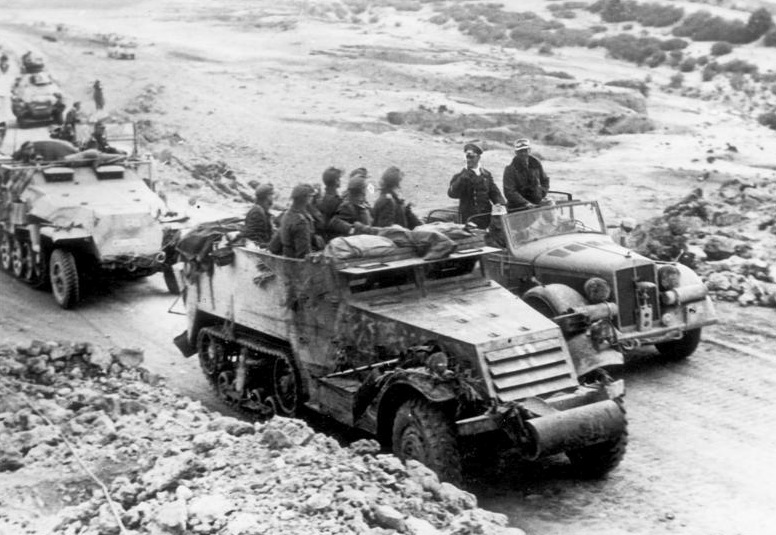
Allied analysis
Training and tactical failures

The Allies studied the results equally seriously. Positioned by senior commanders who had not personally reconnoitered the ground, U.S. forces were often located too far from each other for mutual support. It was also noted that American soldiers tended to become careless about digging in, exposing their positions, bunching in groups when in open view of enemy artillery observers, and positioning units on topographic crests, where their silhouettes made them perfect targets. Too many soldiers, exasperated by the rocky soil of Tunisia, were still digging shallow slit trenches instead of deep foxholes.[40] The 1st Armored had also apparently not learned lessons from British forces on the receiving end of German anti-tank and screening tactics, though others in the U.S. Army were well aware of the deception.[41] The Allies had also allowed the Germans to attain air superiority over the battlefield, largely preventing effective Allied air reconnaissance and allowing relentless German bombing and strafing attacks that disrupted Allied attempts at deployment and organization. Attacks by the Luftwaffe in close support of German ground offensives often neutralized American attempts to organize effective defensive artillery fire.

Allied command failures

General Dwight D. Eisenhower began restructuring the Allied command, creating a new headquarters (18th Army Group, under General Sir Harold Alexander), to tighten the operational control of the corps and armies of the three Allied nations involved and improve their coordination (there having been significant friction during the previous month's operations).

Most importantly for U.S. Army forces, the II Corps commander—Lloyd Fredendall—was relieved by General Eisenhower and sent to a training command assignment for the remainder of the war. However, the widespread custom amongst theater commanders of transferring senior commanders who had failed in battlefield assignments to stateside training commands did not in any way improve the reputation or morale of the latter. Instead of receiving a competent leader, those commands would now be saddled with the difficult job of convincing a disgraced commander to take the lead in advocating radical improvements in existing Army training programs — programs which, like Fredendall himself, had contributed to the embarrassing U.S. Army reverses in North Africa.[42]

Eisenhower confirmed through Major General Omar N. Bradley and others that Fredendall's subordinates had no confidence in him as their commander; British General Harold Alexander diplomatically told U.S. commanders, "I'm sure you must have better men than that".[43][44]

While the lion's share of the blame fell on Fredendall, Kenneth Anderson—as overall commander of British, French, and American forces—bore at least partial responsibility for the failure to concentrate Allied armored units and integrate forces, which Generals Harmon, Ward, and Alexander noted had disintegrated into a piecemeal collection of disjointed units and commands.[45] When Fredendall disclaimed all responsibility for the poorly equipped French XIX Corps and denied French requests for support, notably when under pressure at Faïd, Anderson allowed the request to go unfulfilled. Anderson also came in for criticism for calling on the three combat commands of U.S. 1st Armored Division for independent tasking (over the vehement objections of its commander, Orlando Ward[nb 4]) thus diluting the division's potential effectiveness.[46]
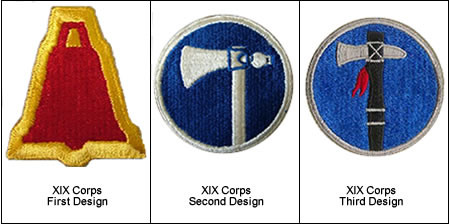
New leadership

On March 6, Major General George S. Patton was temporarily removed from planning for the Allied invasion of Sicily and placed in command of II Corps, with the explicit task of improving performance. He normally worked directly with Anderson's superior, General Harold Alexander. Bradley was appointed assistant Corps Commander and moved up to command of II Corps when Patton returned to planning for Sicily. Fredendall was reassigned to the United States, and several other commanders were removed or promoted "out of the way". Unlike Fredendall, Patton was a "hands-on" general not known for hesitancy, and did not bother to request permission when taking action to support his own command or that of other units requesting assistance.[nb 5]
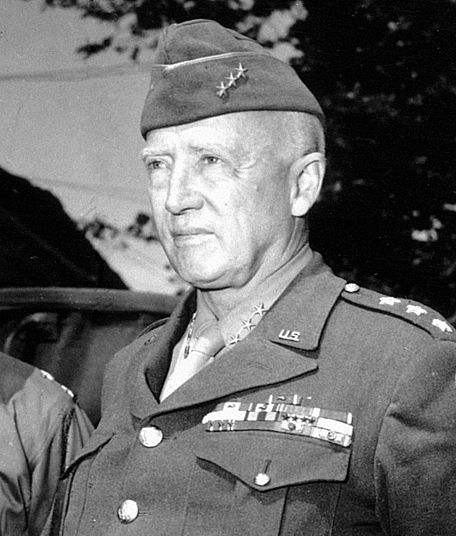

Stafford LeRoy Irwin—who had so effectively commanded the 9th Division's artillery at Kasserine—became a successful divisional commander and later went on to higher command as did Cameron Nicholson of Nickforce fame.


Commanders were given greater latitude to use their own initiative, to keep their forces concentrated, and to make on-the-spot decisions without first requesting permission by higher command. They were also urged to lead their units from the front, and to keep command posts well forward (Fredendall had built an elaborate, fortified "bunker" headquarters 70 mi (110 km) behind the front, and only rarely emerged to visit the lines). The 1st Armored's Orlando Ward—who had become increasingly cautious after Kasserine—was eventually replaced with General Harmon by General Patton.


Tactical and doctrinal changes
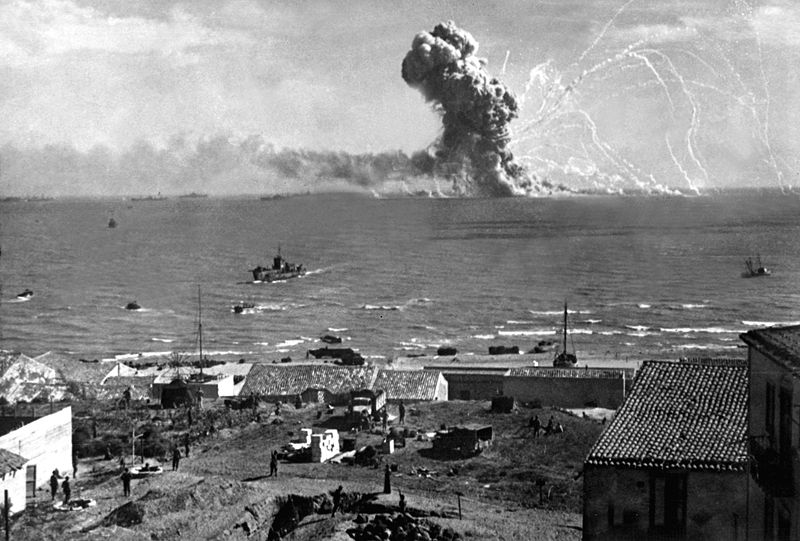
Efforts were made to improve massed on-call artillery and air support, which had previously been difficult to coordinate. While U.S. on-call artillery practices improved dramatically, the problem of coordinating close air support was not satisfactorily resolved until the Battle of Normandy over a year later.[citation needed]

American air defence artillery also began the process of making substantial doctrinal changes. They had learned that, while Stuka dive bombers were vulnerable to .50 in (12.7 mm) anti-aircraft machine gun fire, maneuver units and field artillery in particular needed protection from aerial attack: in one division, 95% of the air attacks were concentrated on its artillery units.[48]

Emphasis was also placed on keeping units together, rather than assigning elements of each division to separate tasks as Fredendall had done. The II Corps immediately began employing its divisions as cohesive units, rather than parcelling out small units on widely separated missions. By the time they arrived in Sicily, their forces were considerably stronger.
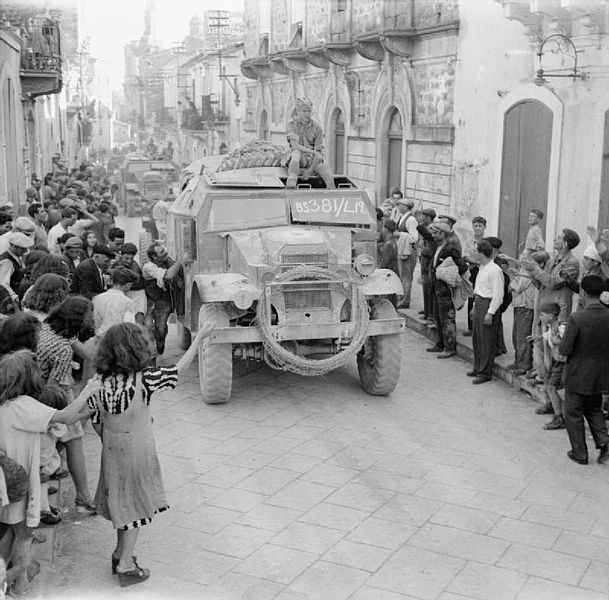
Taken from: http://www.history.com/this-day-in-history/battle-of-the-kasserine-pass & http://en.wikipedia.org/wiki/Battle_of_Kasserine_Pass [14.02.2014]

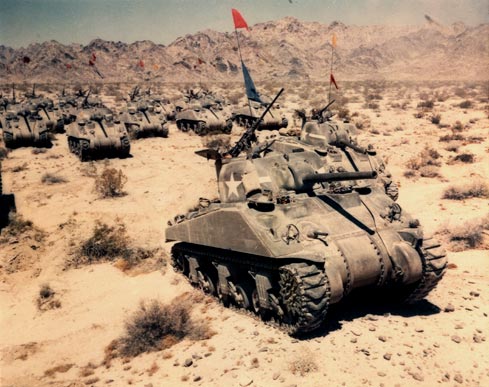
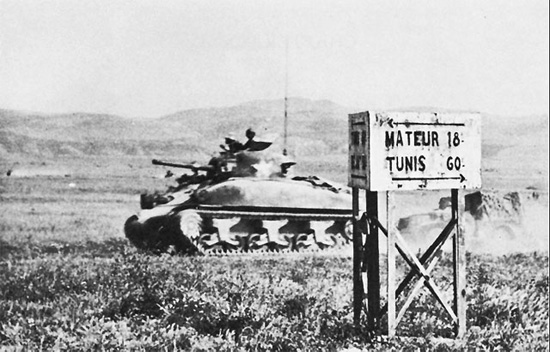
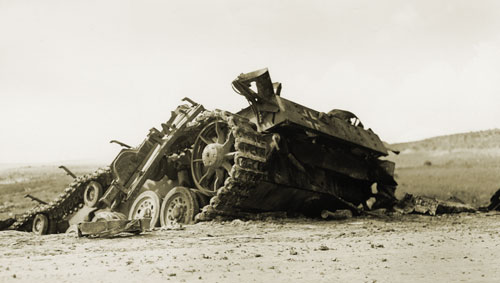
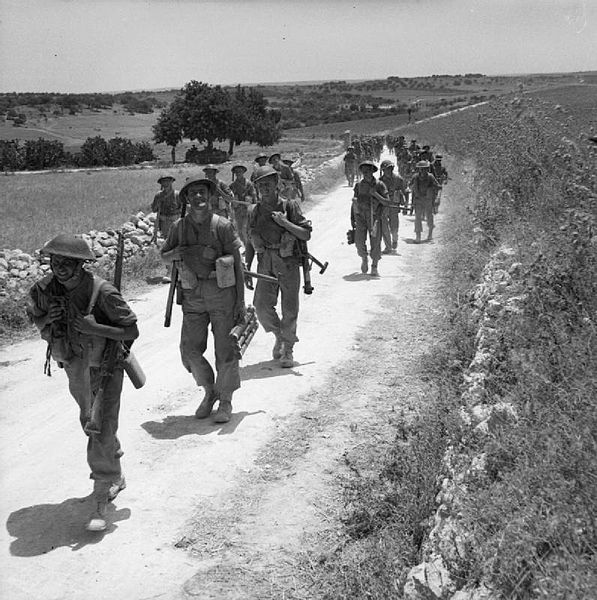
Warfare is a fascinating subject. Despite the dubious morality of using violence to achieve personal or political aims. It remains that conflict has been used to do just that throughout recorded history.
ReplyDeleteYour article is very well done, a good read.
I love reading your articles. Thank you very much. Write more.
ReplyDeleteA very good article. Thanks to the author.
ReplyDelete